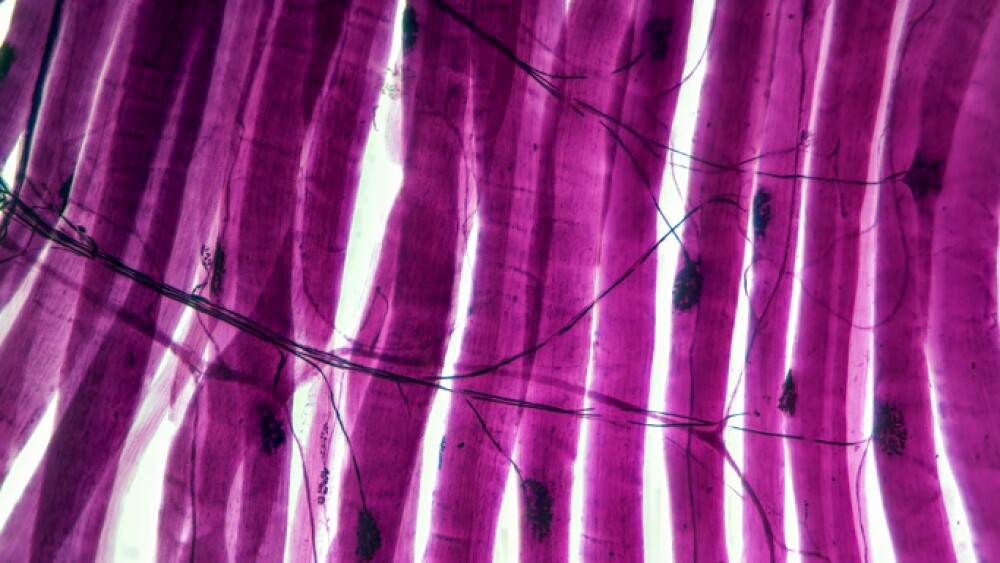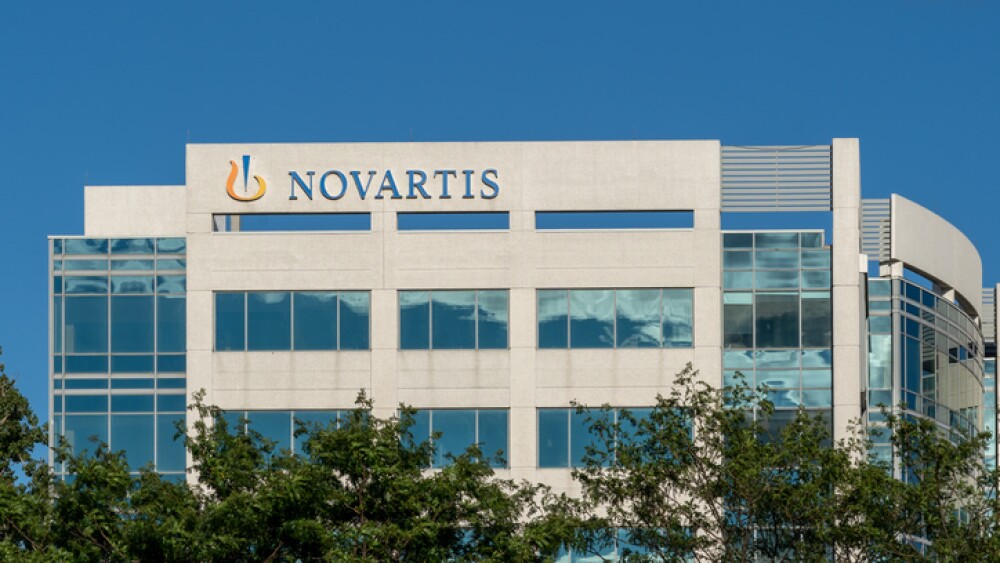RIDGEFIELD, Conn., May 30, 2014 /PRNewswire/ -- Boehringer Ingelheim today announced that new data will be presented from 7 abstracts for Gilotrif® (afatinib) and investigational compounds, including nintedanib and BI 836845, from its oncology pipeline at the 50th Annual Meeting of the American Society of Clinical Oncology (ASCO) in Chicago, IL, on May 30 June 3, 2014.
Data include results from global Phase III trials of afatinib in different patient groups with advanced non-small cell lung cancer (NSCLC):
- LUX-Lung 3 and LUX-Lung 6 overall survival analysis (abstract #8004, oral presentation) comparing first-line afatinib to chemotherapy in patients with advanced NSCLC whose tumors have common epidermal growth factor receptor (EGFR) mutations
- LUX-Lung 5 (abstract #8019, poster session) evaluating treatment beyond disease progression with afatinib and paclitaxel versus investigator’s choice of chemotherapy alone in patients with late-stage NSCLC whose disease has progressed after afatinib alone and have also failed several treatments, including chemotherapy, erlotinib or gefitinib
“Boehringer Ingelheim is proud to present at this ASCO meeting the results from several abstracts for GILOTRIF as well as other investigational compounds from our growing oncology pipeline,” said Berthold Greifenberg, M.D., vice president, Clinical Development and Medical Affairs, Oncology, Boehringer Ingelheim Pharmaceuticals, Inc. “Here at Boehringer Ingelheim, we are committed to advancing the care of patients, and these data underscore our efforts to investigate our research and clinical development programs in a variety of cancer types.”
Data from Boehringer Ingelheim’s Oncology Portfolio at ASCO 2014
Title | Authors | Abstract Details |
Gilotrif® (afatinib) | ||
Overall survival (OS) in patients with advanced non-small cell lung cancer (NSCLC) harboring common Epidermal Growth Factor Receptor mutations (EGFR M+): pooled analysis of two large phase III studies (LUX-Lung 3 [LL3] and LUX-Lung 6 [LL6]) comparing afatinib with chemotherapy (CT) | James Chih-Hsin Yang, Lecia V. Sequist, Martin Schuler, Tony Mok, Kenneth O’Byrne, Vera Hirsch, Sarayut L Geater, Caicun Zhou, Dan Massey, Victoria Zazulina, Yi Long Wu | Monday, June 2 3:00 - 6:00 PM E Hall D2 (Abstract #8004 scheduled for 4:00 - 4:12 PM) |
LUX-Lung 5: a randomized, open-label, phase III trial of afatinib (A) plus paclitaxel (P) versus investigator’s choice of chemotherapy (ICC) in patients (pts) with metastatic non-small cell lung cancer (NSCLC) who had progressed on erlotinib/gefitinib (E/G) and afatinib | Martin Schuler, Chih-Hsin Yang, Keunchil Park, Jaafar Bennouna Yuh-Min Chen, Christos Chouaid, Filippo De Marinis, Jifeng Feng, Francesco Grossi, Dong-Wan Kim, Xiaoqing Liu, Shun Lu, Janos Strausz, Yuriy Vinnyk, Rainer Wiewrodt, Caicun Zhou, Vikram K. Chand, Bushi Wang, Joo-Hang Kim and David Planchard | Tuesday, June 3 8:00 - 11:00 AM E354b (Abstract #8019 Poster #33) |
Nintedanib* | ||
Antiangiogenic-specific adverse events (AEs) in patients with non-small cell lung cancer (NSCLC) treated with nintedanib (N) and docetaxel (D) | Martin Reck, Anders Mellemgaard, Sergey V. Orlov, Maciej Jerzy Krzakowski, Joachim Von Pawel, Maya Gottfried, Igor Bondarenko, Mei-Lin Liao, Jose Barrueco, Julia Hocke, Rolf Kaiser, Silvia Novello, Jean-Yves Douillard, LUME-Lung 1 Study Group | Saturday, May 31 General Poster Sessions: Lung CancerNon-Small Cell Metastatic 1:15 - 5:00 PM S Hall A2 (Abstract #8100 Poster #281) |
Nintedanib plus pemetrexed/cisplatin followed by maintenance nintedanib for unresectable malignant pleural mesothelioma (MPM)an international, multicenter, randomized, doubleblind, placebo-controlled phase II study | Giorgio V. Scagliotti, Natasha B. Leighl, Anna K. Nowak, Nick Pavlakis, Sanjay Popat, Jens Benn Sorensen, Jose Barrueco, Rolf Kaiser, Arsene-Bienvenu Loembe, Martha Mueller, Ute von Wangenheim, Martin Reck | Saturday, May 31 General Poster Sessions: Lung CancerNon-Small Cell Local-Regional/Small Cell/Other Thoracic Cancers 1:15 - 5:00 PM S Hall A2 (Abstract #TPS7612 Poster #218A) |
Independent review of AGO-OVAR 12, a GCIG/ENGOT-intergroup phase III trial of nintedanib (N) in firstline therapy for ovarian cancer (OC) | Gunnar Kristensen, Philipp Harter, Olivier Tredan, Martin Oliver Sailer, Aristotelis Bamias, Nicoletta Colombo, Alexander Reinthaller, Frederic Goffin, Margarita Romeo, Petronella Ottevanger, Rainer Kimmig, Susanne Malander, Florence Joly, Nikolaus De Gregorio, Mansoor Raza Mirza, Jacobus Pfisterer, Tomas Minarik, Sandro Pignata, Michael Merger, Andreas Du Bois | Saturday, May 31 General Poster Sessions: Gynecologic Cancer 8:00 - 11:45 AM S Hall A2 (Abstract #5556 Poster #338) |
BI 836845 (IGF ligand antibody)* | ||
A Phase I dose escalation study of weekly BI 836845, a fully human, affinity-optimized, insulin-like growth factor (IGF) ligand neutralizing antibody, in patients with advanced solid cancers | Chia-Chi Lin, Kwang-Yu Chang, Dennis Chin-Lun Huang, Vicky Marriott, Ludy van Beijsterveldt, Li-Tzong Chen, Ann-Lii Cheng | Sunday, June 1 S Hall A2 |
Phase I dose escalation study of 3-weekly BI 836845, a fully human, affinity optimized, insulin-like growth factor (IGF) ligand neutralizing antibody, in patients with advanced solid tumours | Rihawi K, Ong M, Michalarea V, Bent L, Buschke S4, Bogenrieder T, Anthoney A, de Bono J, Twelves CJ | Sunday, June 1 (Abstract #2622 |
*Nintedanib and BI 836845 are investigational compounds. Their safety and efficacy have not been established.
About Gilotrif® (afatinib) tablets
GILOTRIF is indicated for the first-line treatment of patients with metastatic non-small cell lung cancer (NSCLC) whose tumors have epidermal growth factor receptor (EGFR) exon 19 deletions or exon 21 (L858R) substitution mutations as detected by an FDA-approved test.
Limitation of Use: Safety and efficacy of GILOTRIF have not been established in patients whose tumors have other EGFR mutations.
GILOTRIF is an oral, once-daily kinase inhibitor that is designed to irreversibly bind and inhibit the following receptors: EGFR (ErbB1), HER2 (ErbB2) and ErbB4.
IMPORTANT SAFETY INFORMATION
WARNINGS AND PRECAUTIONS
Diarrhea
- Diarrhea has resulted in dehydration with or without renal impairment; some of these cases were fatal. In the pivotal study, diarrhea occurred in 96% of patients treated with GILOTRIF (n=229), of which 15% was Grade 3 in severity and occurred within the first 6 weeks. Renal impairment as a consequence of diarrhea occurred in 6.1% of patients treated with GILOTRIF, out of which 3 (1.3%) were Grade 3.
- For patients who develop prolonged Grade 2 diarrhea lasting more than 48 hours or greater than or equal to Grade 3 diarrhea, withhold GILOTRIF until diarrhea resolves to Grade 1 or less, and resume GILOTRIF with appropriate dose reduction. Provide patients with an anti-diarrheal agent (e.g., loperamide) for self-administration at the onset of diarrhea and instruct patients to continue anti-diarrheal therapy until loose bowel movements cease for 12 hours.
Bullous and Exfoliative Skin Disorders
- Grade 3 cutaneous reactions characterized by bullous, blistering, and exfoliating lesions occurred in 6 (0.15%) of the 3865 patients who received GILOTRIF across clinical trials. In the pivotal study, the overall incidence of cutaneous reactions consisting of rash, erythema, and acneiform rash was 90%, and the incidence of Grade 3 cutaneous reactions was 16%. In addition, the incidence of Grade 1-3 palmar-plantar erythrodysesthesia syndrome was 7%. Discontinue GILOTRIF in patients who develop life-threatening bullous, blistering, or exfoliating lesions. For patients who develop prolonged Grade 2 cutaneous adverse reactions lasting more than 7 days, intolerable Grade 2, or Grade 3 cutaneous reactions, withhold GILOTRIF until the adverse reaction resolves to Grade 1 or less, and resume GILOTRIF with appropriate dose reduction.
Interstitial Lung Disease (ILD)
- ILD or ILD-like adverse reactions (e.g., lung infiltration, pneumonitis, acute respiratory distress syndrome, or alveolitis allergic) occurred in 1.5% of the 3865 patients who received GILOTRIF across clinical trials; of these, 0.4% were fatal. The incidence of ILD appeared to be higher in patients of Asian ethnicity (2.1%) as compared to non-Asians (1.2%). In the pivotal study, the incidence of Grade >3 ILD was 1.3% and resulted in death in 1% of GILOTRIF-treated patients.
- Withhold GILOTRIF during evaluation of patients with suspected ILD, and discontinue GILOTRIF in patients with confirmed ILD.
Hepatic Toxicity
- In 3865 patients who received GILOTRIF across clinical trials, 10.1% had liver test abnormalities, of which 7 (0.18%) were fatal. In the pivotal study, liver test abnormalities of any grade occurred in 17.5% of the patients treated with GILOTRIF.
- Obtain periodic liver testing in patients during treatment with GILOTRIF. Withhold GILOTRIF in patients who develop worsening of liver function. In patients who develop severe hepatic impairment while taking GILOTRIF, treatment should be discontinued.
Keratitis
- Keratitis, characterized as acute or worsening eye inflammation, lacrimation, light sensitivity, blurred vision, eye pain, and/or red eye occurred in 0.8% of patients treated with GILOTRIF among 3865 patients across clinical trials. Keratitis was reported in 5 (2.2%) patients in the pivotal study, with Grade 3 in 1 (0.4%). Withhold GILOTRIF during evaluation of patients with suspected keratitis, and if diagnosis of ulcerative keratitis is confirmed, treatment with GILOTRIF should be interrupted or discontinued. If keratitis is diagnosed, the benefits and risks of continuing treatment should be carefully considered. GILOTRIF should be used with caution in patients with a history of keratitis, ulcerative keratitis, or severe dry eye. Contact lens use is also a risk factor for keratitis and ulceration.
Embryofetal Toxicity
- GILOTRIF is Pregnancy Category D. Based on its mechanism of action, GILOTRIF can cause fetal harm when administered to a pregnant woman. If this drug is used during pregnancy, or if the patient becomes pregnant while taking this drug, the patient should be apprised of the potential hazard to the fetus.
- Advise females of reproductive potential to use highly effective contraception during treatment, and for at least 2 weeks after the last dose of GILOTRIF. Advise patients to contact their healthcare provider if they become pregnant, or if pregnancy is suspected, while taking GILOTRIF.
Combination with Vinorelbine in HER2 Positive Metastatic Breast Cancer
- An early interimoverall survival analysis of a randomized Phase 3 trial in HER2 positive metastatic breast cancer showed an increased mortality in patients receiving GILOTRIF in combination with vinorelbine compared to trastuzumab and vinorelbine. The combination of GILOTRIF and vinorelbine was also associated with a higher rate of adverse events (such as diarrhea, rash) and fatal events related to infections and cancer progression. GILOTRIF combined with vinorelbine should not be used in patients with HER2 positive metastatic breast cancer.
ADVERSE REACTIONS
- In GILOTRIF-treated patients (n=229) the most common adverse reactions in the pivotal study (>20% all grades & vs pemetrexed/cisplatin-treated patients (n=111)) were diarrhea (96% vs 23%), rash/dermatitis acneiform (90% vs 11%), stomatitis (71% vs 15%), paronychia (58% vs 0%), dry skin (31% vs 2%), decreased appetite (29% vs 55%), pruritus (21% vs 1%).
- Serious adverse reactions were reported in 29% of patients treated with GILOTRIF. The most frequent serious adverse reactions reported in patients treated with GILOTRIF were diarrhea (6.6%); vomiting (4.8%); and dyspnea, fatigue, and hypokalemia (1.7% each). Fatal adverse reactions in GILOTRIF-treated patients included pulmonary toxicity/ILD-like adverse reactions (1.3%), sepsis (0.43%), and pneumonia (0.43%).
- More GILOTRIF-treated patients (2.2%; n=5) experienced ventricular dysfunction (defined as diastolic dysfunction, left ventricular dysfunction, or ventricular dilation; all < Grade 3) compared to chemotherapy-treated patients (0.9%; n=1).
DRUG INTERACTIONS
Effect of P-glycoprotein (P-gp) Inhibitors and Inducers
- Concomitant taking of P-gp inhibitors (including but not limited to ritonavir, cyclosporine A, ketoconazole, itraconazole, erythromycin, verapamil, quinidine, tacrolimus, nelfinavir, saquinavir, and amiodarone) with GILOTRIF can increase exposure to afatinib.
- Concomitant taking of P-gp inducers (including but not limited to rifampicin, carbamazepine, phenytoin, phenobarbital, and St. John’s wort) with GILOTRIF can decrease exposure to afatinib.
USE IN SPECIFIC POPULATIONS
Nursing Mothers
- It is not known whether afatinib is present in human milk. Because many drugs are present in human milk and because of the potential for serious adverse reactions in nursing infants from GILOTRIF, a decision should be made whether to discontinue nursing or to discontinue the drug, taking into account the importance of the drug to the mother.
Renal Impairment
- GILOTRIF has not been studied in patients with severely impaired renal function. Closely monitor patients with moderate (CLcr 30-59 mL/min) to severe (CLcr <30 mL/min) renal impairment and adjust GILOTRIF dose if not tolerated.
Hepatic Impairment
- GILOTRIF has not been studied in patients with severe (Child Pugh C) hepatic impairment. Closely monitor patients with severe hepatic impairment and adjust GILOTRIF dose if not tolerated.
GF PROF ISI Apr 2014
For full prescribing information, including patient information, please click here. You can also visit www.gilotrif.com or contact Boehringer Ingelheim’s Medical and Technical Information (MTI) Unit at 1-800-542-6257.
About nintedanib
Nintedanib is an investigational orally-administered triple angiokinase inhibitor that targets three of the receptor tyrosine kinases shown to aid in the regulation of angiogenesis: fibroblast growth factor receptor (FGFR), platelet-derived growth factor receptor (PDGFR), and vascular endothelial growth factor receptor (VEGFR). Growing scientific evidence shows that these three different angiokinase receptors play an important role not only in angiogenesis but also in tumour growth and metastasis. Nintedanib is being evaluated in various solid tumors.
About BI 836845
BI 836845 is an investigational compound in early-stage clinical development. It is a fully human antibody that binds to insulin-like growth factor (IGF) signaling pathways, which may play a role in the development or spread of cancer by providing a growth mechanism for tumors. BI 836845 specifically binds to IGF-1 and IGF-2. It is being studied in combination with other agents for use in patients with advanced solid tumors.
About Boehringer Ingelheim in Oncology
Building on scientific expertise and excellence in the fields of pulmonary and cardiovascular medicine, metabolic disease, neurology, virology and immunology, Boehringer Ingelheim has embarked on a major research program to discover and develop innovative cancer treatments. Working in close collaboration with the international scientific community and a number of the world’s leading cancer centers, Boehringer Ingelheim’s commitment to oncology is underpinned by using advances in science to develop a range of targeted therapies for various solid tumors and hematological cancers. The current focus of late-stage research includes compounds in three areas: signal transduction inhibition, angiogenesis inhibition and cell-cycle kinase inhibition. The company is also evaluating a robust and growing pipeline of early-stage oncology compounds in areas including growth/survival signaling, immunotherapy and epigenetics.
For information about participating in a Boehringer Ingelheim clinical trial, please visit www.bicancertrials.com or call 1.866.725.7110.
About Boehringer Ingelheim Pharmaceuticals, Inc.
Boehringer Ingelheim Pharmaceuticals, Inc., based in Ridgefield, CT, is the largest U.S. subsidiary of Boehringer Ingelheim Corporation (Ridgefield, CT) and a member of the Boehringer Ingelheim group of companies.
The Boehringer Ingelheim group is one of the world’s 20 leading pharmaceutical companies. Headquartered in Ingelheim, Germany, it operates globally with 142 affiliates and more than 47,400 employees. Since it was founded in 1885, the family-owned company has been committed to researching, developing, manufacturing and marketing novel medications of high therapeutic value for human and veterinary medicine.
Social responsibility is a central element of Boehringer Ingelheim’s culture. Involvement in social projects, caring for employees and their families, and providing equal opportunities for all employees form the foundation of the global operations. Mutual cooperation and respect, as well as environmental protection and sustainability are intrinsic factors in all of Boehringer Ingelheim’s endeavors.
For more information, please visit http://www.us.boehringer-ingelheim.com
Media Contact
Boehringer Ingelheim Pharmaceuticals, Inc.
Public Relations
Name: Paul Wynn
Phone: 203-798-4887
Email: paul.wynn@boehringer-ingelheim.com
Further Media Channels
https://www.facebook.com/BoehringerUS
https://twitter.com/boehringerUS
http://www.youtube.com/user/BoehringerUS
SOURCE Boehringer Ingelheim Pharmaceuticals, Inc.
Help employers find you! Check out all the jobs and post your resume.




